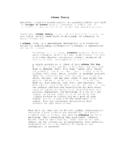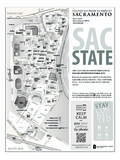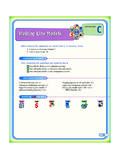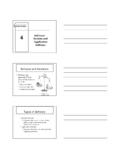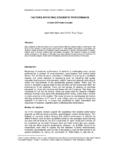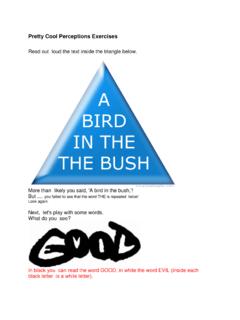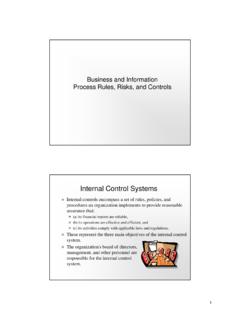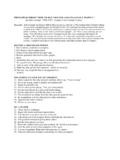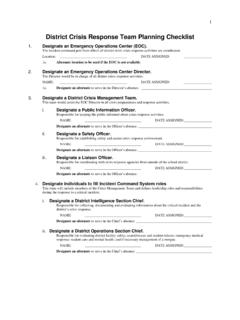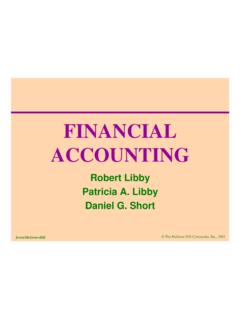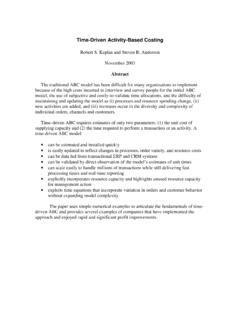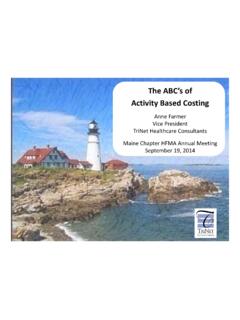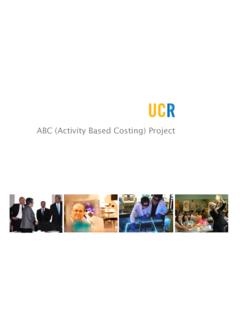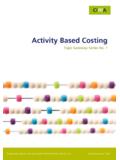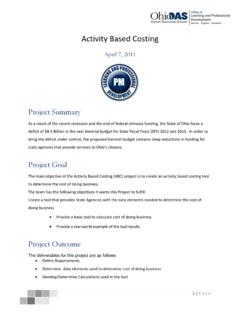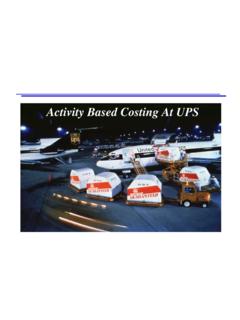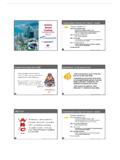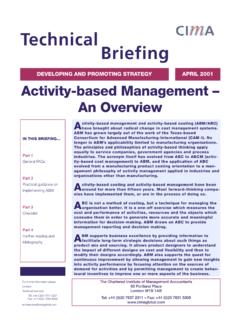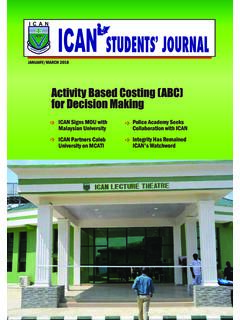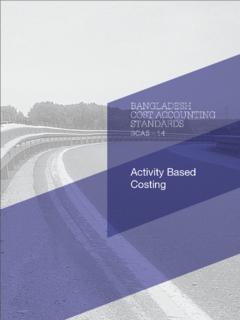Transcription of Chapter 5: Activity-Based Costing (ABC) & Activity-Based ...
1 Chapter 5: Chapter 5: Activity-Based Costing (ABC)& Activity-Based Management (ABM)H 13 5 -1 Horngren 13eA SIMPLE Costing SYSTEM5-2AN Activity-Based Costing SYSTEM5-3 ABC s 7 StepsStep 1:Identify the products that are thechosen cost :IdentifythedirectcostsoftheproductsStep 2 3:Select theactivities and cost-allocation basesto 4:Identifytheindirect costsassociated with each cost-allocationbase( activity ).allocation base( activity ).Step 5:Compute therate per unitof each cost-allocation base( activity )used to allocate indirect costs to the(y) 6:Compute the indirectcosts allocatedto the 7:Compute thetotal costs of the productsby adding alldirect and indirect costs assigned to the HIERARCHIESIn an ABC system, costs are categorized on the basis of the different types of cost drivers utilized.
2 ABC systems commonly use a cost hierarchy havingyyygfour levels. These cost drivers differ in their relationship between the indirect cost and the product or unit-level costs are the costs of activities performed on each individual unit of a product or service. These costs increase as the number of units produced costs are the costs of activities related to a group of units of Batch-level costs are the costs of activities related to a group of units of products or services rather than the individual unit. Set-up costs are an example of batch level costs, as this cost is incurred once for each batch, regardless of the size of the HIERARCHIESPdii (iii ) h f iii Product-sustainingcosts(service-sustaini ngcosts)are the costs ofactivitiesundertaken to support individual products or services regardless of the number of units or batches produced.
3 Design costs are an example of this type of t th t f ti iti th t t b td t Facility-sustainingcostsare the costsofactivities thatcannot be traced toindividual products or services but support the organization as a whole. Examples of this type of cost include general administration, rent, and pypg,,building security. These costs usually lack a cause-and-effect relationship between the cost and the allocation basecost and the allocation Objective 1: Explain how broad averaging undercosts and overcosts products or services .. this problem arises when ppreported costs of products do not equal their actual costs 14 Learning Objective 1: Explain how broad averaging undercosts and overcosts products or services .. this problem arises when ppreported costs of products do not equal their actual costs 15 Learning Objective 2: Present three guidelines for refining a Costing system.
4 Classify more costs as direct costs, expand the number y,pof indirect-cost pools, and identify cost driversTrue or FalseI dit l b d di t ib ti t ld t lik l b i th ti itIndirect labor and distribution costs wouldmost likely be in the same activity -cost Objective 2: Present three guidelines for refining a Costing system .. classify more costs as direct costs, expand the number y,pof indirect-cost pools, and identify cost driversTrue or FalseI dit l b d di t ib ti t ld t lik l b i th ti itIndirect labor and distribution costs wouldmost likely be in the same activity -cost : FalseIndirect labor and distribution costs would notbe in the same activitycostIndirect labor and distribution costs would notbe in the same activity -costpool because their cost drivers are very dissimilar.
5 A cost driver of indirect labor would include direct labor hours, while a cost driver of distribution costs would include cubic feet of cargo moved17would include cubic feet of cargo Objective 3: Distinguish between simple and ABC systems .. unlike simple systems, ABC systems calculate costs of individual activities y, yto cost productsLearning Objective 5: Cost products or services using ABC .. use cost rates for different activities to compute indirect costs of a productLearning Objective 6: Explain how ABC systems are used in ABM .. such as pricing decisions, product-mix decisions, and cost reduction[EXERCISE]18[EXERCISE]19[SOLUTI ON]20 Learning Objective 4: Describe a four-part cost hierarchy .. a four-part cost hierarchy is used to categorize costs based on different types of cost gypdrivers for example, costs that vary with each unit of a product versus costs that vary with each batch of products21 Learning Objective 4: Describe a four-part cost hierarchy.
6 A four-part cost hierarchy is used to categorize costs based on different types of cost gypdrivers for example, costs that vary with each unit of a product versus costs that vary with each batch of products22 Learning Objective 7: Compare ABC systems and department Costing systems .. ABC systems are a refinement of department costingypgsystems into more-focused and homogenous cost poolsLearning Objective 8: Evaluate the costs and benefits of implementing ABC systems .. measurement difficulties versus more accurate costs that aid in decision makingaccurate costs that aid in decision making23 Learning Objective 7: Compare ABC systems and department Costing systems .. ABC systems are a refinement of department costingypgsystems into more-focused and homogenous cost poolsLearning Objective 8: Evaluate the costs and benefits of implementing ABC systems.
7 Measurement difficulties versus more accurate costs that aid in decision makingaccurate costs that aid in decision making24
